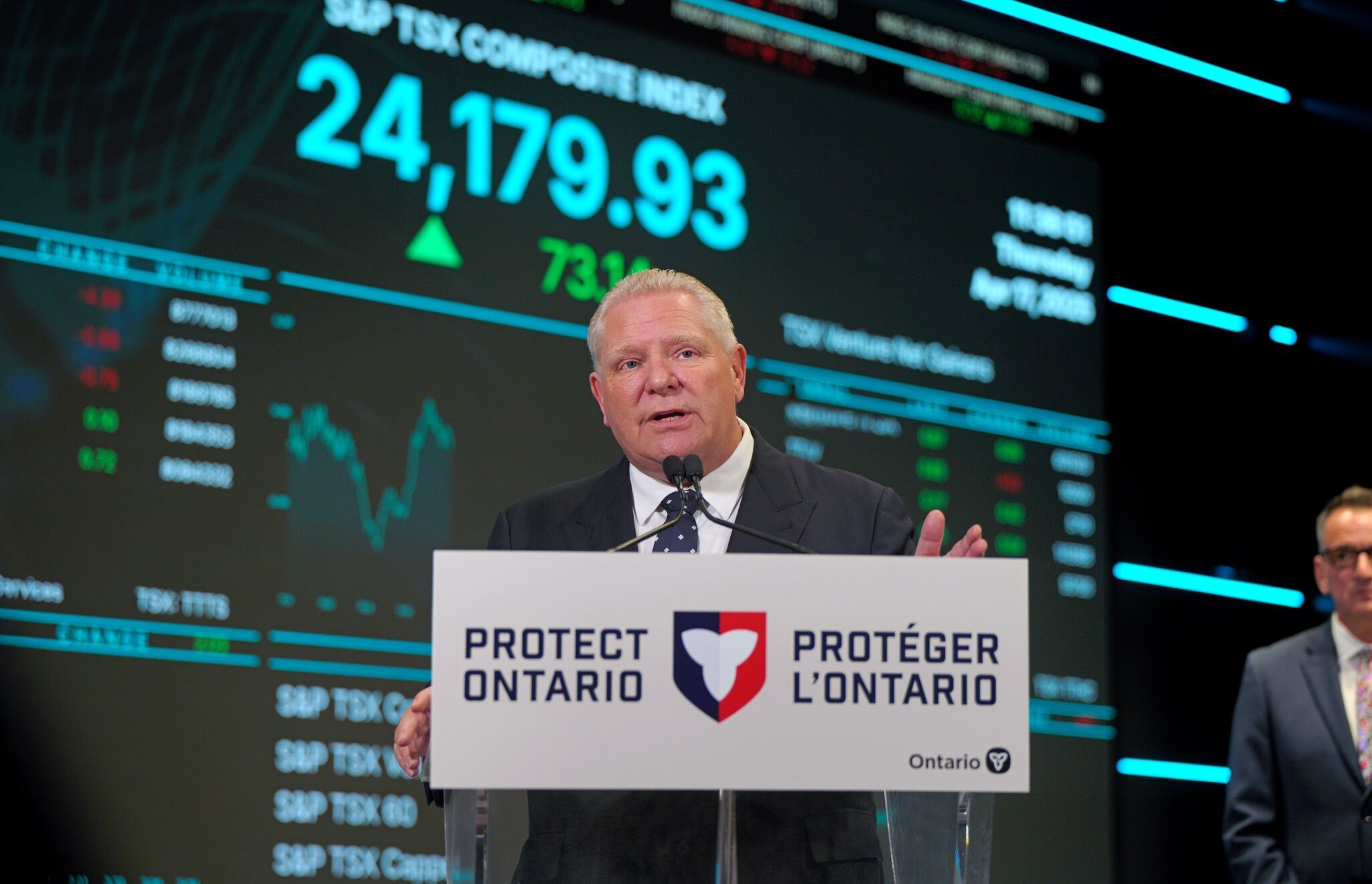Silver and Gold: Historic Ports in an Economic Storm
The number of blogs, tweets, newspaper columns, RSS feeds, Facebook chats and business channel roundtables about where the value of gold, silver, the greenback and euro are headed could be compared to the U.S. government’s burgeoning debt burden.
Both keep growing exponentially and largely for the same reason: the 2007-08 global financial crisis, a child born of three decades of credit expansion by the U.S., the country whose fiat currency replaced gold as the monetary standard in the early 1970s.
Here is the economic upshot: Europe, Japan, OPEC and Third World countries have long held reserves in the form of U.S. Treasury debt, which has been declining in terms of foreign-exchange value. Meanwhile, BRIC-centred countries — led by China, India and major raw materials exporters — have been and are running trade surpluses.
“What is reversing [a trend] that seemed irreversible for the past 65 years is the manner in which the United States has dealt with its bad-debt crisis,” writes Michael Hudson, in a recent working paper entitled US Quantitative Easing is Fracturing the Global Economy. Hudson is a research associate at the Levy Economics Institute of Bard College. “The Federal Reserve and Treasury are seeking to inflate the economy out of debt with an explosion of bank liquidity and credit – which means yet more debt.”
The knock-on effect is that the global economy is being flooded with electronic bank credit and credit derivatives while the U.S. balance-of-payments deficit widens and U.S. official debt soars, Hudson writes.
The Fed’s most recent “quantitative easing” was characterized as an injection of $600 billion of new money into the U.S. economy. But instead of getting banks lending to American households and companies again, Hudson says, there is now capital flight out of the economy, led by U.S. money managers, in order to buy up foreign currencies, bonds, gold, raw materials and other similar assets.
At the moment, long-time gold and silver bugs are finally being heard above the persistent din of economists advocating pro-Keynesian economic tenets, which are all about using a country’s government and public sector to financially “back up” the private sector market. Unfortunately, government meddling in markets often sets off unforeseen events that might look well-intentioned but often lead to more misfortune. Hence, the 2007/08 economic meltdown and the domino effect that still continues to whiplash economies, investors and countries alike.
It comes as no surprise, then, that there has been a widespread re-assessment of investment portfolios, which could – if things truly implode – react like a house of cards in a world where hyperinflation and currency depreciation are the norm. Do not forget that the intrinsic value of a fiat currency is zero; the world is full of countries where dirt streets are littered with crumpled, large-denominated paper notes now worth little or nothing.
The current stresses on the global financial system will only exacerbate volatility across any number of markets. Gold and silver have long acted as a hedge against the possibility of hyperinflation and currency depreciation that will arise if money continues to be printed and deficit spending remains the status quo.
Gold and silver represent purchasing power stability in an economic storm and that is a big reason why the two precious metals have been inextricably linked to various forms of monetary exchange for the past 4,500 tumultuous years.
It is no secret that gold has moved from US$255 per ounce in 2001 to around US$1,378 an ounce some 45 days ago. While silver was broadly overlooked during the beginning of gold’s current bull run, it has played a game of catch-up since 2003, almost hitting US$30 an ounce in the third quarter of 2010.
And while the two metals have moved in lock-step for centuries, investors should take note; the rate at which gold and silver move into and out of bull and bear phases does differ, often dramatically.
Why? The silver market is far smaller than the gold market, which affects market liquidity. That makes the silver market more volatile and subject to the fluctuating demand for both its industrial and store-of-value uses.
Historically, it has taken about 16 ounces of silver to buy one ounce of gold. This ratio has become much more volatile in the past 150 years, especially as markets turned to issuing monetary paper without the backing of gold or silver. Since the U.S. Civil War, the gold/silver ratio has moved from the historic norm of 16:1 through more than 100:1 in the late-1930s to around 24:1 in the early-1970s when the U.S. dollar replaced gold as the monetary standard. It moved back to100:1 again in the early 90s.
The average ratio during the past 20 years or so has been about 65:1.
But the 2007-08 credit crisis moved the goal posts. To paraphrase an old saying, gold is the money of monarchs, silver the money of gentlemen and debt the money of slaves. Investors are going back to historical gold and silver hedges during these unsettling economic times.
While gold is always a much soughtafter commodity during times of duress, silver —“gold’s little brother” — becomes the cheaper alternative investment in a gold bull run. That is why silver tends to follow the pricing of gold up and then down but in a more volatile fashion, moving higher and lower because of its low relative price.
“Typically, when gold does well, silver outperforms gold…and over the past 12 to 18 months, silver has outperformed gold,” says Peter Barnes, chief executive of Silver Wheaton, a company that finances polymetal mining companies by buying their streams of silver production. “The model we created six years ago is an alternative to debt and equity issuance for mining companies; we can pay people more than the silver is worth in their company.”
He also says that big funds have recently been talking to Silver Wheaton, even though not all of them are necessarily bullish on precious metals.
“But they’re worried about what’s going on in the world – will the U.S. dollar keep going down, will there be another banking crisis? They’re looking for insurance and putting a percentage of their portfolios into precious metals,” he says.
So where are silver and gold headed, assuming that currencies remain embattled, the sovereign debt question remains largely unanswered and politicians keep meddling in “free markets” that are no longer free?
There are predictions aplenty. As economies unravel, some analysts are calling for gold to eventually approach US$10,000 per ounce, others $5,000 an ounce. Silver Wheaton’s Barnes sees gold moving through $2,500 an ounce while silver will go through $50 an ounce, all of it driven by investment demand.
There is now growing certainty that gold will not fall below US$1,300 an ounce during this current bull phase. There is no apparent ceiling and the same goes for the entire precious metal sector, which will increasingly take the spotlight as funds chase anything akin to outperformance.
CIBC Capital Markets analyst Barry Cooper expects gold to hit US$1,600 in 2011 and US$1,700 in 2012. Silver should reach US$30 an ounce by 2012, he says.
“The supply of money is beating out the supply of gold, driving prices higher,” he says in a late-November note to clients.
Cooper says that this hedging trend will likely continue, as insulation from the economic storm, in major economies as well as in regions where the dilemma is less pronounced.
When the silver/gold ratio was still about 60:1 in mid-2010 (in late November it had fallen just below 50:1), Erste Group Bank Ag’s equities analyst Ronald-Peter Stoferle wrote in a report that silver is clearly undervalued relative to gold.
“Using a gold/silver ratio of 16:1 equates to a price of $75 per ounce for silver, based on the current ballpark price of $1,200 per ounce for gold, [and] suggests a price of $650 if gold were to reach a parabolic top of $10,400,” he says.
Here is another pro-silver angle to consider: Given the economic emergence of BRIC countries such as China and India, silver – both a precious metal and a metal used in an increasing array of industrial uses (please see story on page XX ) – could be heading for an eventual decoupling from gold pricing, which is, always has been and will likely remain, a straightforward investment tool.
“Silver is, like gold, a monetary metal, but the relevance for the industrial sector is much higher than that of gold,” Erste’s Stoferle writes.
In other words, as economies hopefully find some sort of solid footing three to five years out from now, a relatively high floor for silver prices could be created as more industrial manufacturers and emerging markets create demand for the metal — for everything from energy infrastructure and technology components to consumer, water and healthcare needs, as well as for strategic, or military, uses.
“The industrial demand for silver will be there and that will, I think, keep silver prices a lot stronger than in the past,” Silver Wheaton’s Barnes says.
Links and References
Click here for full list of links:http://go.mining.com/jan11-a2
More News
Ukraine-US sign memorandum on minerals deal
April 17, 2025 | 03:05 pm
Ontario promises to cut red tape for critical mining projects
April 17, 2025 | 01:48 pm
MP Materials halts exports to China
The move follows Chinese restrictions announced earlier this month.
April 17, 2025 | 01:32 pm
{{ commodity.name }}
{{ post.title }}
{{ post.date }}




Comments